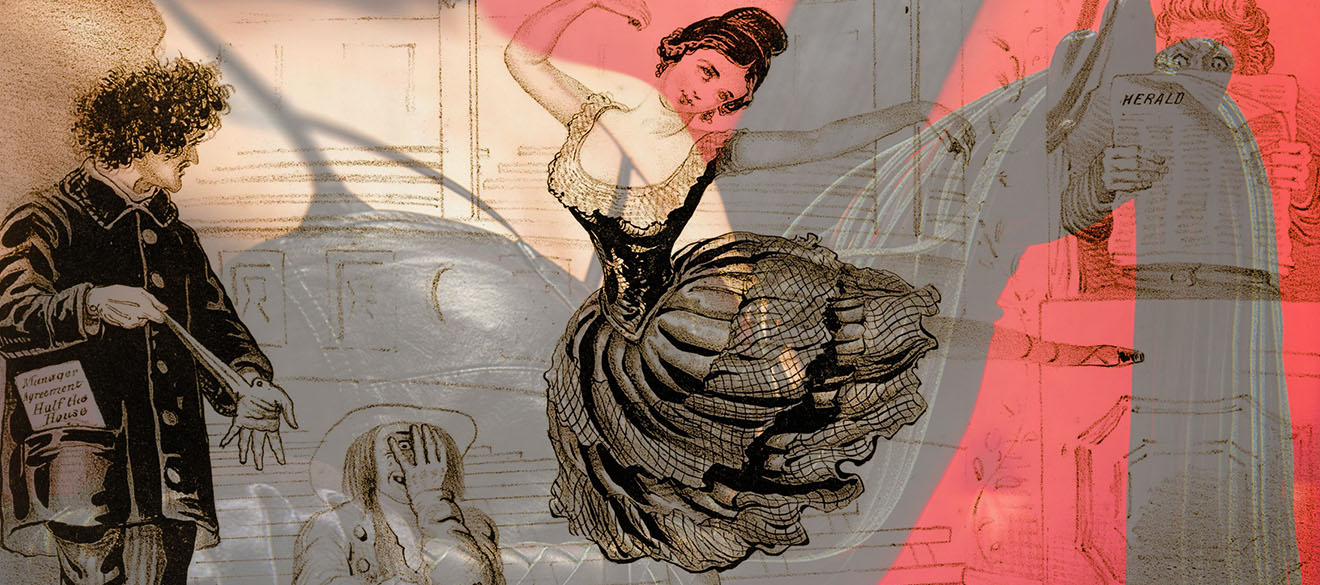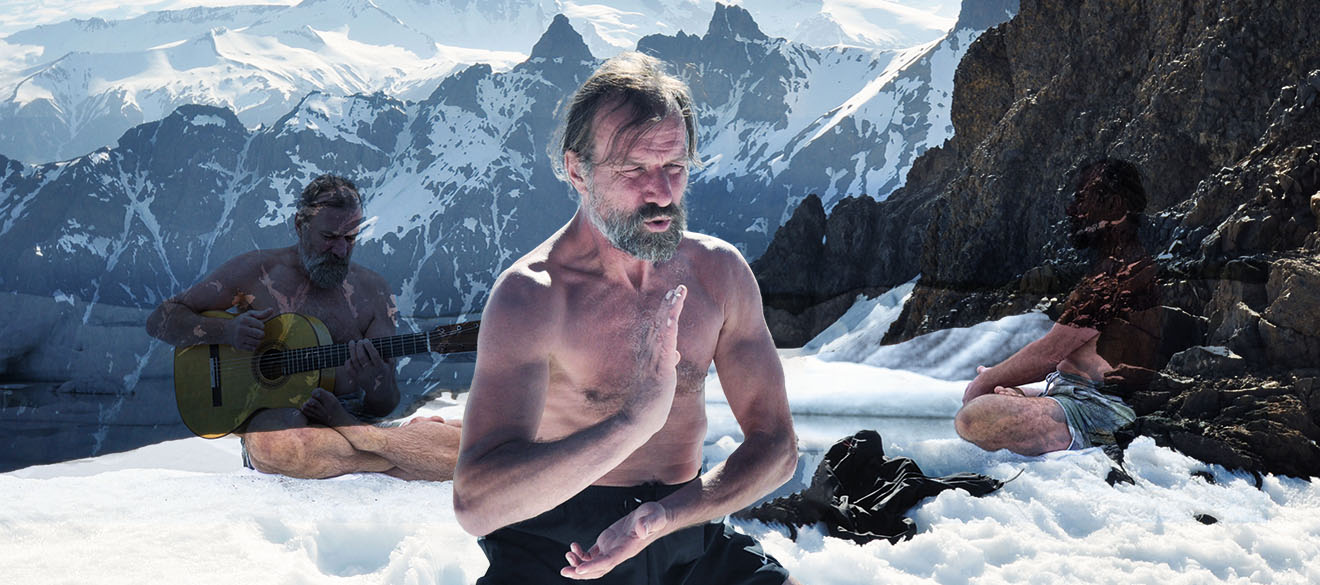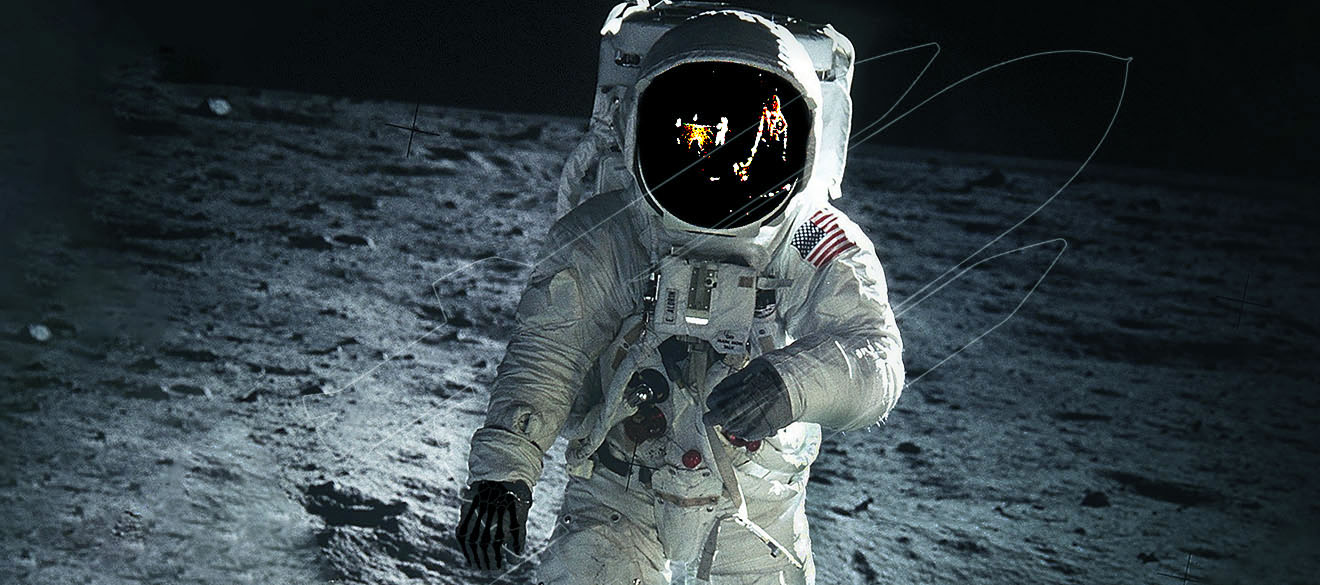The Iceman
It’s a few days after his birthday when I call Wim Hof, the legendary “Iceman” and extreme athlete known for his superhuman ability to withstand long-term exposure to sub-zero conditions. It’s the middle of coronavirus lockdown, but he tells me he was still able to celebrate turning 61 by spending a frosty 61 minutes in an ice bath. He shrugs it off and says he could have endured longer. Most people would struggle to do ten minutes in similar conditions.
Hof has an infectious personality, his wide-eyed enthusiasm for wellness and giddy verbiage only occasionally tempered by a reference to the hard science backing his claims. In other interviews, he’s been challenged for getting the facts wrong, and he explains that his children, who also help him run his business, are always having to remind him to stick to what can be proven — not stretch his claims too far, so as to avoid drawing criticism from the skeptic community. But with Hof, it seems he can’t quite help himself.
He does make a few mistakes on the science in our interview, and he certainly has a tendency to get carried away. But he is genuine — I get the definite impression he truly believes in making a positive impact on people’s lives through the Wim Hof Method. And while he may have scientific blind spots, there are plenty of studies to back up the benefits of the deep breathing techniques and cold exposure he has pioneered.
In your own words, what is the Wim Hof Method?
It began as a soul-searching exercise, but soon I found the cold. From there, I developed specific breathing exercises and did regular cold-water immersions.
The mindset part is a result of learning we are so much more capable of dealing with stress — physical, mental, biological, and emotional — than we previously were aware.
Stress control derived from regular practice in the cold makes you confident and very adaptable in daily life.
So breathing, cold, and mindset are the three pillars of the Wim Hof Method that give way to learning how to deal with stress of any kind.
So the Wim Hof Method is a lot more than just breathing and exposing yourself to cold? It sounds like it involves a lot of “life-coaching” ideas too.
The method is composed of three pillars as mentioned previously, but the outcome is more than just physical — it’s spiritual.
It is about love for all: nature, yourself, others, and all sentient beings. This is what you get when stress in your life is no longer a nuisance. You become more peaceful and full of uninhibited flow. It’s spirituality, with two legs firmly on the ground.
Which parts of your practice specifically help you get more in touch with yourself?
If you go take the course, for example, you don’t think — you are. You get into the depth of the brain where normally you are not.
Killer No. 1 in society is cardiovascular disease. In every person on Earth, there are millions of little muscles helping to control blood flow. How do you train these muscles? By going into the cold. Blood flow will improve with training and will improve access to oxygen, nutrients, and vitamins for your cells.
Then the heart. Because we wear clothes all the time and avoid exposure to the cold, our skin becomes de-stimulated. All our thermal receptors, which are designed to pass on the cold and react to it, no longer do so effectively.
By exposing ourselves to cold, we give our heart relief, because all the millions of muscles that make up our cardiovascular system are being optimized, providing more access to energy.
What advice would you give to someone just starting out on the Wim Hof Method. What should they expect? How soon can you see results?
You see results — no, you feel results — within half an hour. Just do the breathing exercises. The first time you go into the cold, the first thing you do is breathe. You learn to change your chemistry through deep, specific breathing techniques.
What do long-term benefits look like?
You learn to control yourself, and you get a lot more confident. You are better equipped to deal with stress of all sorts; that means biological stress, emotional stress, mental stress, viral stress, and bacterial stress.
How did you discover The Iceman superhuman resistance to cold?
Let me say, everybody has this superhuman ability to regulate his or her own chemistry. Everybody. We have been showing this in comparative studies now in which we showed that the existing paradigm in medical science — that the autonomic nervous system cannot be influenced by humans at will, nor the endocrine system nor the immune system — we have shown that we can tap into all three consciously. We changed science there, fundamentally.
So how did I do it? I went into nature, challenged myself, challenged my mind, challenged my body, and then came back to research institutions to show how simple but very effective techniques allow us to go deeper, and suddenly do what seemingly was impossible for humans to do.
You’ve spoken often about your early “soul-searching” days. Which other practices have you found fulfilling, and were there any practices you think are bullshit?
I found a lot of bullshit practices. Bullshit to me. That is to say: too far-fetched, too obscure, too complicated, too esoteric. They did not appeal to the depth of connection I was looking for. The cold brought all that “hamstering, circling mind” to a stop. The cold stills the mind, it gives you instant power and a deep connection.
Suddenly, I was at the steering wheel. The journey began, though everybody thought I was crazy.
I felt great doing my daily practice, yet it took 25 years to get the mainstream to respect what I was doing.
From crazy, to The Iceman and scientific validation, has been a journey of holding on to my beliefs and practice.
Now, we have shown that it works and helped people all over the world realize deep, tangible results in a very short period of time.
You’ve been challenged before for suggesting The Iceman Wim Hof Method works for cancer patients or for people suffering from terminal diseases. What’s your current position?
We always state that the method is not a cure, and that people should consult their medical doctors to see if they can use the Wim Hof Method as an ad-on therapy. This is policy, and this is something that we do not stray away from.
My personal position toward people who suffer from cancer or other terminal diseases is still to inform them that there is so much more than what contemporary science is telling us is possible.
Healing powers within people’s physiology are incredibly undervalued. Too often, we overutilize pills, medicines and depend too heavily on doctors. There are more natural internal methods to be discovered and used to battle what is happening inside our bodies and minds.
It’s more logical to focus inwardly than to continue relying on external dependencies. I have shown this, and it’s been proven scientifically. It is my belief that this is the way forward, and I will solidify it more and more through nonspeculative comparative science, using rigid data.
I have seen so many people be healed. I am convinced that we have much more power inside us than what we know or is being let on.
In consultation with their doctor, people should try the method out for themselves to see what it does for them.
How do you deal with fear when you’re out trying to break a world record or do something most people would consider incredibly dangerous?
There is danger in nature. You always see it coming. You always feel it coming. It’s very clear. Only society is sneaky. In society, a lot of people get diseases, depression. It sneaks in. You don’t feel, you don’t see. In nature, you always see the danger coming. You always feel the danger coming. And you never cross the line.
What is your opinion on the state of healthcare in western countries? Are you an advocate for alternative medicines and holistic treatment across the board in all areas of life?
How can you develop a model monetizing our sickness? You don’t want anybody to be healthy if you make money off of people who are sick.
People advertise all kinds of pills and medicines all over the world, and they get it into our systems, get it into the new doctors, that it is normal to be sick and to be treated.
If they see arthritis, they see six kinds of medicines behind it, all approved by the FDA and the ethical commissions of the pharmaceutical industry through research. But there is no research showing how to heal without medicines, and I know those ones. We have showed with thousands of people, hundreds of thousands of people, healing through no medicine, no pill, just their own belief, breathing, and cold exposure.
What are The Iceman health tips in other areas of life? What tips do you have outside of the Wim Hof Method?
I like to do high-intensity interval training myself. I like the cold obviously, or anything I can come up with. I like playing guitar, singing, painting, and doing crazy stuff with my little one, or being outside in the garden. It’s all there. It’s very obvious.
What are your thoughts on marijuana and alcohol?
I’m not drinking anymore, and I feel great. And weed, I’m not smoking weed. I smoked hashish when I was in my 20s, and it was amazing. I’ve done anything that is prohibited by the church. And I enjoyed it, I loved it. But I am enjoying not needing it. Now, I just say, “Get high on your own supply.” The breathing really does it and cold does it, intensity training does it. And my cute little son, he does it, too, because he’s ridiculously beautiful.
The Incredible Achievements of The Iceman
Wim Hof first started gaining notoriety for his Arctic antics when the Guinness Book of World Records crew caught wind of a crazy Dutchman doing insane stuff in the ice. Since then, he has racked up an impressive 26 world records and successfully completed a range of other superhuman feats, such as:
- Running a half marathon barefoot above the Arctic Circle, wearing only shorts
- Hanging on one finger at an altitude of 2,000 meters
- Swimming underneath ice for 57.6 metres
- Climbing Kilimanjaro and Everest while wearing only shorts
- Running a full marathon in Africa’s Namib Desert without drinking
- Standing in a container while covered in ice cubes for extended periods of time
Most Importantly perhaps: Shown scientifically that the autonomous nervous system related to the innate immune response can be wilfully influenced, something that was previously unknown to science.











































